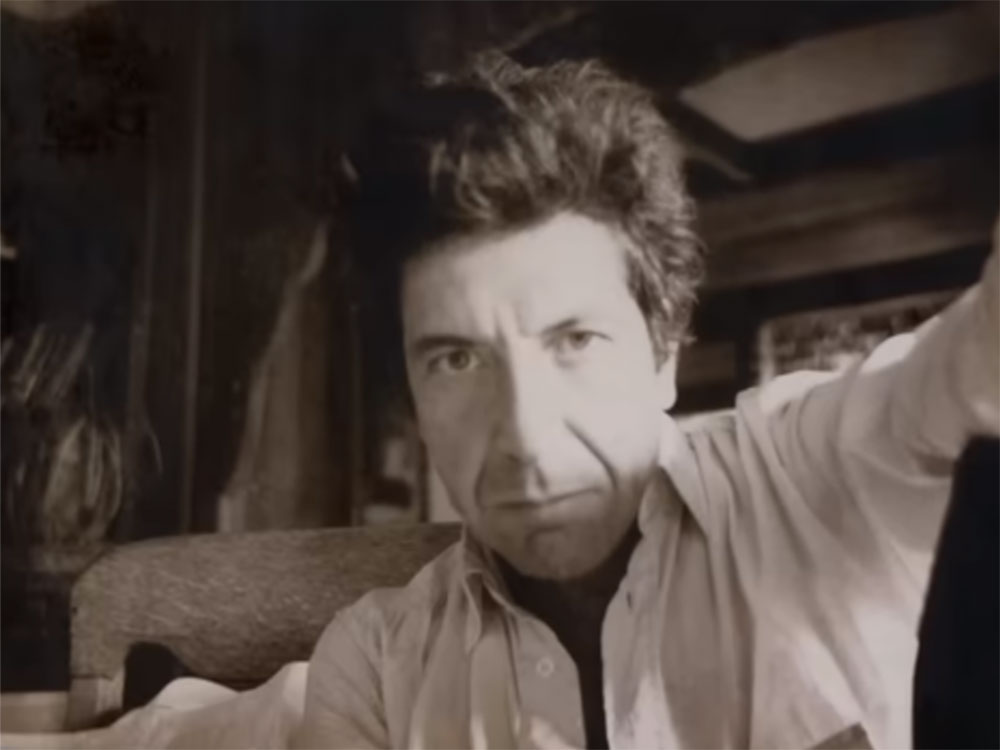Sometimes all it takes is one song to change things.
But how a particular song gets to be where it needs to be is a long and winding road.
A case in point is the popular resurgence of Kate Bush’s “Running Up That Hill (A Deal with God)."
Even at her wuthering heights in the 1980s, Bush was always something of an acquired taste. Her kookiness and commitment to the esoteric (from modern dance to English literature) rendered the woman a little too out there for pop superstardom. But when her 1985 song “Running” was used as a critical plot point in the Netflix series Stranger Things, it raced to the top of the hill. I mean charts.
No one was perhaps more surprised than Bush herself as a new generation of fans discovered her music.
The sudden popularity of the song broke records. In June, “Running” made it to the number-2 slot on the American Billboard Hot 100, the first of Bush’s songs to do so. This was followed by Hounds of Love making it to number 1 in the Alternative Albums chart in the U.S.
Another song that took an even longer route to global recognition is the subject of the new documentary Hallelujah: Leonard Cohen, a Journey, a Song, opening in theatres on July 15.
Co-directors Dayna Goldfine and Dan Geller centre the narrative around the genesis of “Hallelujah” and Cohen’s career after the song’s rise to the pop canon. Based on Alan Light’s book The Holy or the Broken: Leonard Cohen, Jeff Buckley and the Unlikely Ascent of Hallelujah, there is a bounteous amount of material packed into the film: fame, failure, love, loss, money, poetry, sex, suffering — and Shrek.
It’s a lot. But of course, Cohen was a lot.
Leonard Norman Cohen was born into a wealthy Jewish family in Montreal. He made a name for himself as a poet and a writer before joining the folk revival movement of the 1960s. At a benefit concert for Sane Nuclear Policy in New York City in 1967, the show’s headliner Judy Collins invited a very nervous Cohen to sing his song “Suzanne.” When he broke a guitar string, he fled the stage. After Collins convinced him to return and finish the song with her, a star was born.
That singular moment makes for a riveting introduction in the documentary. As Collins recounts in an interview, Cohen maintained that he couldn’t sing, couldn’t really play the guitar and wasn’t certain if “Suzanne” was really even a song, but his lyrics were already something for the ages.
Holiness and horniness
As journalist Larry “Ratso” Sloman remarks, Cohen’s career was seemingly determined by the twinned polarities of “holiness and horniness.” It’s not a bad summation of “Hallelujah” itself, with lyrics that voice a passion for the divine as well an interest in more earthly pleasures.
As a fledgling reporter for Rolling Stone, Sloman first interviewed Cohen in 1974. Over the years, the two met regularly to shoot the shit in cafés and talk shop about music. Some of their exchanges, captured on cassette tape, offer an unvarnished peek into Cohen’s creative process with “Hallelujah.” It was not an easy birth.
After years of jotting down lyrics in notebooks, the number of verses had grown to more than 180. Most had to do with Cohen’s spiritual questing, but some were about sex in the kitchen. Cohen finally recorded a version of “Hallelujah” on his 1984 album Various Positions with a young producer named John Lissauer. But when the album was presented to Walter Yetnikoff, then president of Columbia Records, things did not go well. In sounding the record’s death knell, Yetnikoff stated, “Leonard, we know you’re great. But we don’t know if you’re any good.”
By the 1980s, Cohen’s music career had cooled. A disastrous pairing with Phil Spector for the 1977 album Death of a Ladies’ Man hadn’t done him any favours. He was still writing and performing, but his work was becoming increasingly marginalized in the synth pop era. Although Various Positions eventually found a U.S. distributor, it wasn’t until the 1991 release of the Cohen tribute album I’m Your Fan that things began to turn around.
The Shrek effect
After hearing Cohen perform “Hallelujah” at a show in New York, an experience that “knocked me sideways,” John Cale, formerly of the Velvet Underground, covered the song in a spartan, dour version for the tribute album. In addition to highlighting its religious fervour, Cale also trimmed it down to a more listener-friendly length, dumping some of the more outré lyrics.
Jeff Buckley’s rendition drew even more attention when a record executive heard the singer perform it at Sin-é, a small bar in Manhattan’s East Village. Buckley had accidentally come across the song while staying at a friend’s apartment. His version, released on the album Grace, offered up a very different quality: rhapsodic, impassioned, ethereal.
After Buckley’s accidental death by drowning when he was 30-years-old, the song took on another level of resonance. But it took Shrek to truly punt “Hallelujah” into the heavens. When the animated film was released in 2001, it featured Cale’s version in the film and Rufus Wainwright’s on the soundtrack album. Suddenly everyone and their donkey lined up to take a shot at it.
Over the years, a cavalcade of different artists put their particular stamp on “Hallelujah” including Bob Dylan, Brandi Carlile, Bono and even Willie Nelson. “Hallelujah” has popped up everywhere from SNL to the memorial service offered at the Washington Monument where Yolanda Adams performed it in honour of the 400,000 souls lost to COVID-19.
The documentary features a wall of sound composed from these different vocal interpretations. They run the gamut from something akin to cat torture to cornpone countrified versions. Some of the most egregious examples took place on the reality show American Idol, when judge Simon Cowell chose the song for a vocal showdown. It’s almost enough to make one never want to hear “Hallelujah” ever again.
But even great singers do strange things to it. A case in point is k.d. lang’s overwrought version, offered at the Tower of Song, a tribute concert that took place in Montreal’s Bell Centre in 2018 following Cohen’s death.
After all the sound and fury has died down, what remains is infinitely more intriguing. Namely, the mysterious process by which music enters into the world.
In the documentary, Rabbi Mordecai Finley, Cohen’s rabbi, explains the concept of Bat Kol, the female voice of God, that functions as a muse. When she comes into an artist’s life and an exchange ensues, something transformative can happen. In the case of “Hallelujah,” there is something of the arcane, the ineffable, along with a goodly portion of raunchy sex, that clings to the song no matter how many bowdlerized interpretations are offered up.
In the documentary, the number of times that “Hallelujah” could have been consigned to the dustbin of history are legion, except that fate, chance or whatever you would like to call it had other plans. This serendipitous quality extends to Cohen himself.
In the final coda of his career, after losing most of his money to his long-time manager, Cohen was forced to go back out on the road, performing around the world to rapturous response. The closing song in this series of concerts was “Hallelujah.” The film dedicates a good portion of time to some of these performances and they are undeniably astounding.
More than nostalgia
The recent surge of interest in Kate Bush’s and Leonard Cohen’s work was brought about by its prominent placement in popular entertainment.
But I think there’s something more to it than simple nostalgia. There have been a number of comeback hits lately, from Fleetwood Mac’s “Dreams" to Beyonce’s new take on ’90s house in “Break My Soul.”
It’s natural in times of uncertainty to seek comfort in the familiar, but both “Running Up That Hill” and “Hallelujah” are not simple songs — kind of the opposite.
The two share some curious commonalities. They are both soaring, majestic entreaties for understanding, empathy and of course, love. That these things should resound so profoundly in this current moment may indicate a greater hunger for meaning, for communion, for something larger in the human experience. Both songs are also a mixture of the sacred and the profane, but of these two things, it is the more spiritual aspect that seems the most compelling to audiences, perhaps because there is so little of this quality in current mainstream music.
There are capricious forces at work when it comes to matters of art, but is there really anything deeper behind this than the age-old human yearning for spiritual redemption and connection with a catchy chorus and poetic lyrics?
Perhaps.
Music can contain the holy in a way that is much more immediate and direct than other disciplines, transcending language, age, culture and bridging all manner of divisions. It’s why when all else fails, we return to it, asking only to hear the song again. ![]()

















Tyee Commenting Guidelines
Comments that violate guidelines risk being deleted, and violations may result in a temporary or permanent user ban. Maintain the spirit of good conversation to stay in the discussion.
*Please note The Tyee is not a forum for spreading misinformation about COVID-19, denying its existence or minimizing its risk to public health.
Do:
Do not: